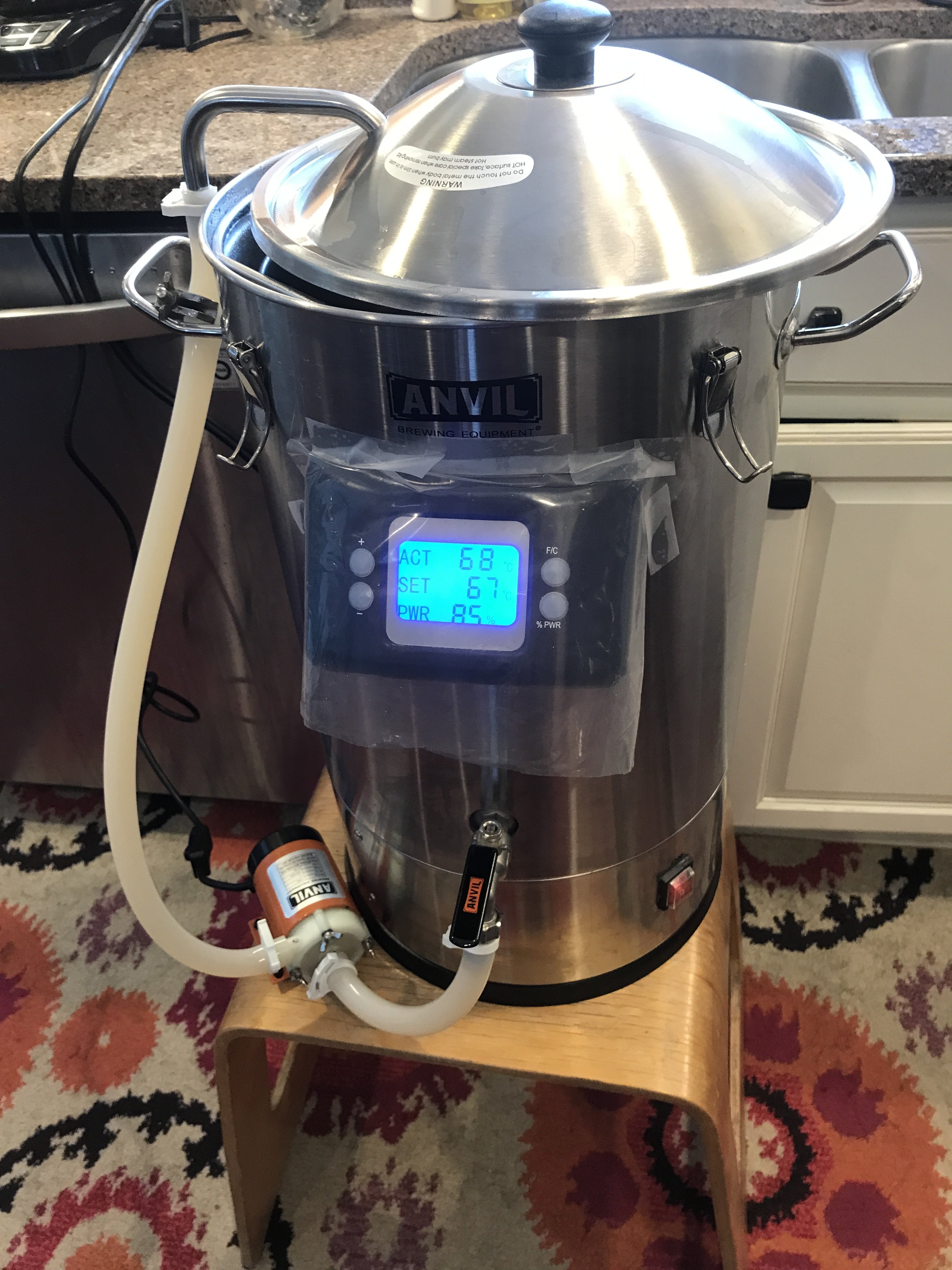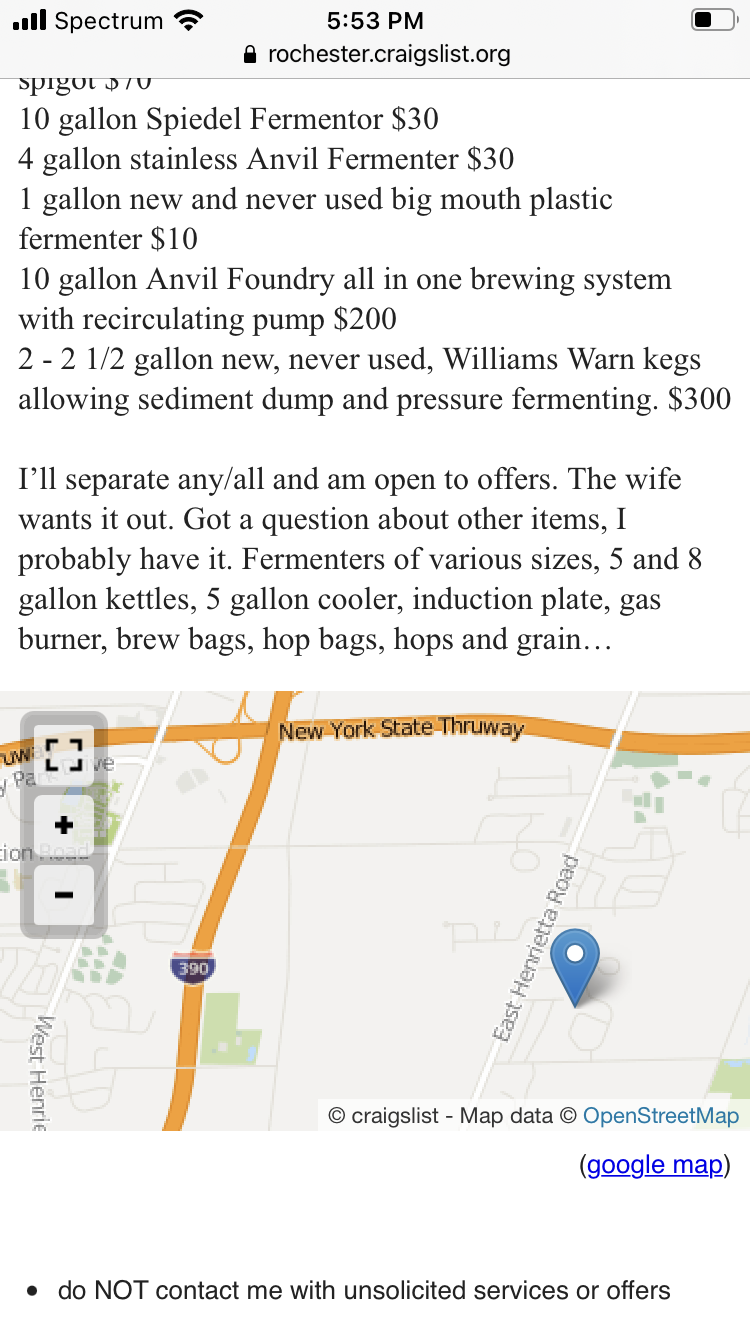The Anvil Foundry 10.5 gallon and 6.5 gallon units can be run on either 120V or 240V.
Yes, I know I have a 10.5. and that is why I said 110 sucks and recommend using 240.

The Anvil Foundry 10.5 gallon and 6.5 gallon units can be run on either 120V or 240V.


Well I would assume with gas prices way up this year and no chance of coming down for the next 2.5 years, it would be a no brainer to switch to electric.. Although I don't have any numbers in front of me, I'd assume you can't go wrongHow much will your electric bill increase if you go with one of these systems?
Not sure what about other AIOs but I do a fly sparge (i.e. 1-2" of sparge water over the grain bed) with every batch on my Grainfather. After mashout, simply lift the basket, and as the liquid level drops let the top filter plat come to rest lightly on top of the grain bed and then start the flow of your sparge water (I feed mine from a gott cooler). Adjust the flow of the sparge water so it matches the flow through the grain bed and let it rip. If your crush is right, and your grain bed is setup well, you have a nice slow, even sparge. I suppose you could achieve the same by pouring sparge water from a pitcher on top... just have to keep up with the drainage to the liquid level stays high enough.Just a note: You cannot do a traditional fly sparge (1" - 2" of liquid over the grain bed) with the all-in-one (AIO) units. You can to a pour over sparge (no liquid above grain bed), which is not as efficient as a traditional fly sparge. (No, I haven't seen any actual measurements, and it is not possible to simulate accurately.) It is not necessary to heat sparge water, but doing so will speed up the time to reach boiling.
Brew on
Is your grain bed still saturated with wort during your sparge? If not, then it is not the same as a traditional fly sparge. Most grain beds will not stay saturated without a flow restriction at the bottom of the vessel containing the grain.Not sure what about other AIOs but I do a fly sparge (i.e. 1-2" of sparge water over the grain bed) with every batch on my Grainfather. After mashout, simply lift the basket, and as the liquid level drops let the top filter plat come to rest lightly on top of the grain bed and then start the flow of your sparge water (I feed mine from a gott cooler). Adjust the flow of the sparge water so it matches the flow through the grain bed and let it rip. If your crush is right, and your grain bed is setup well, you have a nice slow, even sparge. I suppose you could achieve the same by pouring sparge water from a pitcher on top... just have to keep up with the drainage to the liquid level stays high enough.
FWIW - I've been using a Grainfather G30 110v for years, and about 100 batches now... and love it. Especially the ability to brew indoors, year round. That, easy cleanup, and compact stoarge make it (any AIO, electric) a no brainer if you have the funds.

Exactly the problem I have when the basket is lifted is that, the water flows through too quickly when fly sparging.. Too much dead space beneath where the elements are.. Any solutions would be appreciated!Is your grain bed still saturated with wort during your sparge? If not, then it is not the same as a traditional fly sparge. Most grain beds will not stay saturated without a flow restriction at the bottom of the vessel containing the grain.
What is your typical sparge water volume, and how long does it take you to sparge? Do you recirculate wort during the mash (it seems to me that a bed that would flow slow enough to stay saturated without a bottom flow restriction, would be to compacted too be able to recirculate.)
Brew on
I have an Anvil Foundry, and a hoist in my garage ceiling. I simply raise the basket enough for the water level to come down to just above the top of the grain, set the hoist and start adding sparge water. When the water levels equalize, I repeat the process until sparge is complete, then lift the basket out completely. Usually takes about 25-40 mins depending on the grain bill. I always calculate my strike water volume at ~1.5 qt/lb, then add ~1.8 gal to compensate for dead space in the Anvil. The remaining water I use for sparge. I usually get mash efficiency in the low-mid 80s if I do everything right. It would probably make sense to just add more grain and not worry about it, but I like doing it.Exactly the problem I have when the basket is lifted is that, the water flows through too quickly when fly sparging.. Too much dead space beneath where the elements are.. Any solutions would be appreciated!
Yes - the grain is holding wort, but obviously its trickling out the bottom when I lift the basket. I guess I have crush that just works for me... wort flows through the grain during the mash, and I am recirculating the entire time. Once I life the basket and let the wort drip out into the boiler, while adding sparge water on top, it takes 30-40 minutes or so... haven't timed it in a very long time. My mash / sparge volumes are typically on the order of 4.5g mash to 3.5g sparge for an average strength brew... higher amounts for mashing if the grain bill is exceptionally large.Is your grain bed still saturated with wort during your sparge? If not, then it is not the same as a traditional fly sparge. Most grain beds will not stay saturated without a flow restriction at the bottom of the vessel containing the grain.
What is your typical sparge water volume, and how long does it take you to sparge? Do you recirculate wort during the mash (it seems to me that a bed that would flow slow enough to stay saturated without a bottom flow restriction, would be too compacted to be able to recirculate.)
Brew on
You may have accomplished a very tricky balancing act.Yes - the grain is holding wort, but obviously its trickling out the bottom when I lift the basket. I guess I have crush that just works for me... wort flows through the grain during the mash, and I am recirculating the entire time. Once I life the basket and let the wort drip out into the boiler, while adding sparge water on top, it takes 30-40 minutes or so... haven't timed it in a very long time. My mash / sparge volumes are typically on the order of 4.5g mash to 3.5g sparge for an average strength brew... higher amounts for mashing if the grain bill is exceptionally large.

Enter your email address to join: